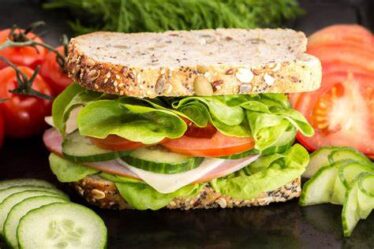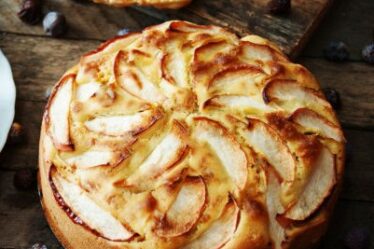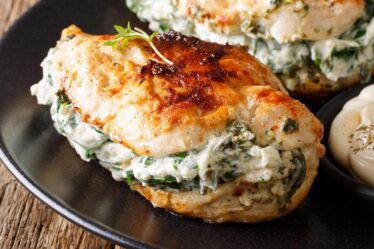Adopting a gluten-free diet is essential for many people with gluten sensitivity. This adjustment in eating habits can seem challenging at first, but with the right recipes and a bit of creativity, it’s possible to enjoy delicious and nutritious meals. Gluten sensitivity affects many people, causing discomfort and a range of undesirable symptoms.
In this article, we’ll explore what gluten sensitivity is, the benefits of a gluten-free diet, the most common ingredients in gluten-free recipes, and, of course, share some amazing recipes you can make at home.
So, if you’re looking for tasty alternatives to include in your daily menu, keep reading and discover how easy and enjoyable gluten-free cooking can be!
1. What is Gluten Sensitivity?
Gluten sensitivity, also known as non-celiac gluten sensitivity, is a condition where people experience negative symptoms after consuming gluten but do not have celiac disease or a wheat allergy. Symptoms can include abdominal pain, bloating, diarrhea, headache, fatigue, and joint pain. While the symptoms can be similar to celiac disease, gluten sensitivity does not cause damage to the small intestine.
To diagnose gluten sensitivity, it’s important to rule out other conditions, such as celiac disease and wheat allergy. This is typically done through medical tests and a supervised elimination diet. Once diagnosed, the main form of treatment is following a gluten-free diet, which can significantly improve quality of life.
2. Benefits of a Gluten-Free Diet
Following a gluten-free diet can bring several benefits to those with gluten sensitivity. Here are some of the main benefits:
- Reduction of Gastrointestinal Symptoms: Many people report a significant decrease in symptoms such as abdominal pain, bloating, and diarrhea after eliminating gluten from their diet.
- Increased Energy Levels: Fatigue is a common symptom of gluten sensitivity. Avoiding gluten can help improve energy levels and reduce the feeling of tiredness.
- Improvement in Mental Health: Some people notice an improvement in mood and mental clarity after adopting a gluten-free diet.
- Healthier Skin: Skin problems, such as eczema, can improve with the elimination of gluten from the diet.
- Better Digestion: Digestion can become more efficient, resulting in better nutrient absorption and less gastrointestinal discomfort.
3. Common Ingredients in Gluten-Free Recipes
Cooking gluten-free may seem complicated, but there are many alternative ingredients available. Here are some of the most common ingredients used in gluten-free recipes:
- Rice Flour: An excellent substitute for wheat flour, ideal for cakes, breads, and cookies.
- Almond Flour: Rich in proteins and healthy fats, it’s great for cakes and breads.
- Coconut Flour: A high-fiber, low-carb option, perfect for baking.
- Cornstarch: Used as a thickener in soups, sauces, and desserts.
- Quinoa: A versatile and nutritious grain, great for salads, soups, and sides.
- Gluten-Free Oats: Can be used in various recipes, from porridge to cakes.
- Tapioca Flour (Sweet and Sour): Essential in Brazilian cuisine, especially in cheese bread recipes.
4. Gluten-Free Recipes
Breakfast
Banana Pancakes with Rice Flour
Ingredients:
- 1 ripe banana
- 1 egg
- 2 tablespoons of rice flour
- 1 teaspoon of baking powder
- A pinch of salt
- Honey or maple syrup for serving
Instructions:
- Mash the banana in a bowl.
- Add the egg and mix well.
- Incorporate the rice flour, baking powder, and salt.
- Heat a non-stick skillet and pour portions of the batter.
- Cook until golden on both sides.
- Serve with honey or maple syrup.
Lunch
Quinoa with Vegetables and Grilled Chicken
Ingredients:
- 1 cup of quinoa
- 2 cups of water
- 1 grilled chicken breast, sliced
- 1 grated carrot
- 1 zucchini, diced
- 1 red bell pepper, chopped
- Salt and pepper to taste
- Olive oil for sautéing
Instructions:
- Rinse the quinoa and cook in water according to package instructions.
- In a skillet, heat the olive oil and sauté the carrot, zucchini, and bell pepper.
- Add the grilled chicken and season with salt and pepper.
- Mix in the cooked quinoa and serve hot.
Dinner
Eggplant Lasagna
Ingredients:
- 2 large eggplants, thinly sliced
- 1 cup of tomato sauce
- 300g of ground beef
- 1 chopped onion
- 2 minced garlic cloves
- 1 cup of grated mozzarella cheese
- Salt and pepper to taste
- Olive oil for sautéing
Instructions:
- Preheat the oven to 180°C (350°F).
- In a skillet, heat the olive oil and sauté the onion and garlic.
- Add the ground beef and cook until browned. Season with salt and pepper.
- Add the tomato sauce and cook for another 10 minutes.
- In a baking dish, layer the eggplant slices, meat sauce, and cheese.
- Bake for 25-30 minutes, until the eggplant is tender and the cheese is melted.
- Serve hot.
Snacks
Chickpea Patties
Ingredients:
- 1 cup of cooked and mashed chickpeas
- 1 grated carrot
- 1 small chopped onion
- 2 tablespoons of rice flour
- Salt and pepper to taste
- Olive oil for frying
Instructions:
- In a bowl, mix all the ingredients until a homogeneous dough forms.
- Shape the dough into patties.
- Heat the olive oil in a skillet and fry the patties until golden on both sides.
- Drain on paper towels and serve.
Desserts
Gluten-Free Carrot Cake
Ingredients:
- 3 medium grated carrots
- 3 eggs
- 1 cup of sugar
- 1/2 cup of oil
- 2 cups of rice flour
- 1 tablespoon of baking powder
Instructions:
- Preheat the oven to 180°C (350°F).
- In a blender, blend the carrots, eggs, sugar, and oil.
- Transfer to a bowl and incorporate the rice flour and baking powder.
- Pour the batter into a greased baking pan and bake for 35-40 minutes.
- Let it cool before serving.
5. Tips for Cooking Gluten-Free
Cooking gluten-free can be easy and enjoyable with some practical tips:
- Plan Your Meals: Organize your meals in advance to ensure you always have gluten-free ingredients on hand.
- Read Labels: Always check product labels to ensure they are gluten-free.
- Avoid Cross-Contamination: Use separate utensils and surfaces to avoid cross-contamination with gluten-containing foods.
- Experiment with New Ingredients: Don’t be afraid to try new gluten-free ingredients and substitutions.
- Make at Home: Preparing your meals at home ensures you know exactly what you’re consuming.
Conclusion
Following a gluten-free diet doesn’t have to be difficult or boring. With the right recipes and some practical tips, you can enjoy delicious and nutritious meals every day. We hope these recipes inspire you to explore gluten-free cooking and discover new flavors. Keep reading for more tips and recipes!
FAQ
- Can I substitute rice flour with another gluten-free flour? Yes, you can use almond flour, coconut flour, or other gluten-free flours as a substitute.
- Is it hard to find gluten-free ingredients? No, many supermarkets and health food stores offer a wide variety of gluten-free ingredients.
- Can I freeze gluten-free recipes? Yes, many gluten-free recipes can be frozen and reheated as needed.
- How can I avoid cross-contamination with gluten? Use separate utensils and surfaces to prepare gluten-free foods and always clean the kitchen thoroughly.
- Are gluten-free recipes healthy? Yes, gluten-free recipes can be very healthy, especially when using whole, nutritious ingredients.



